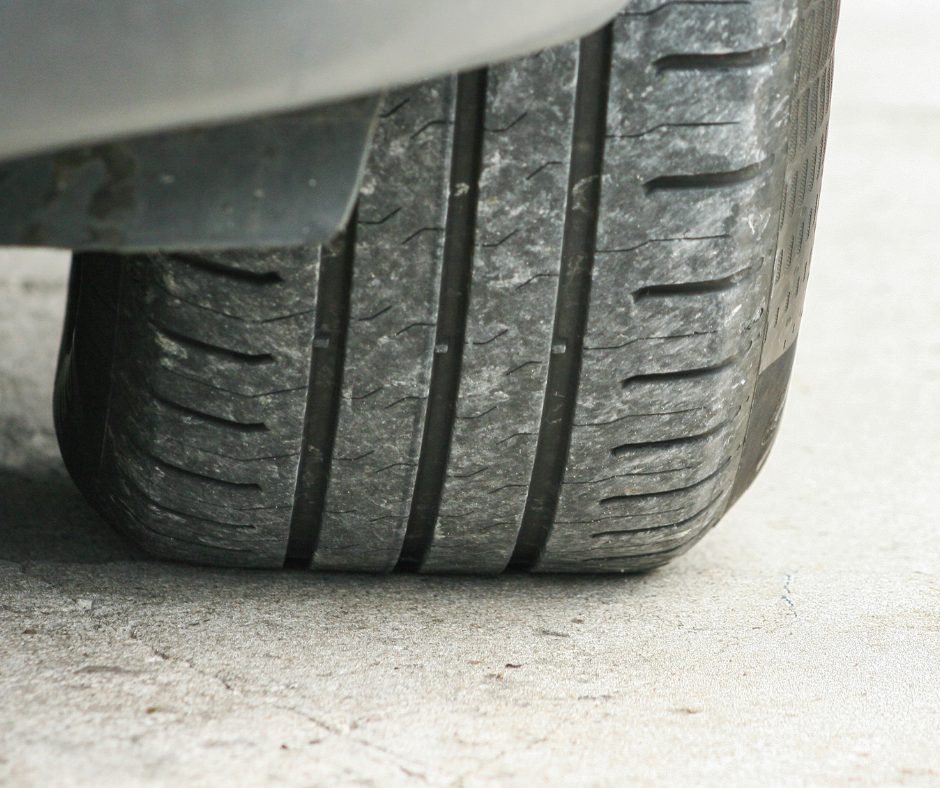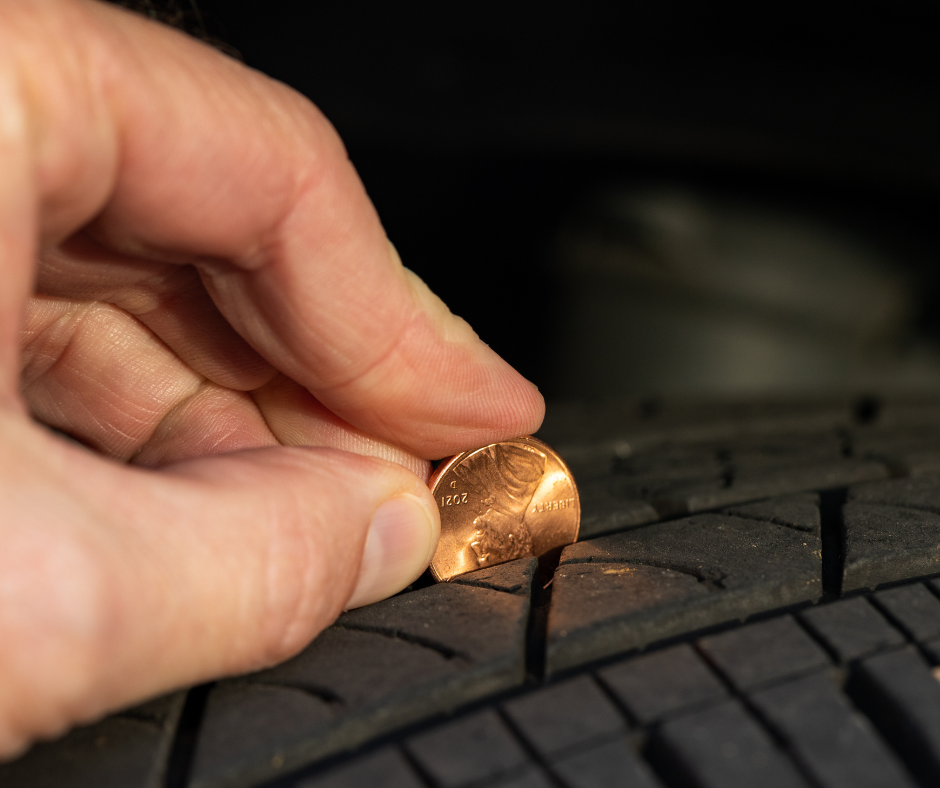Maintaining your tires is one of the most important aspects of vehicle upkeep. Not only does it protect you on the road, but it also enhances fuel efficiency, prolongs tire life, and saves you money. The best part? You can do it with just a little know-how and basic tools.
Doing your P.A.R.T in tire maintenance is a simple acronym to help remember the key aspects of taking care of your tires. Here’s a comprehensive guide to help you keep your tires in top shape:

Checking your tire pressure is an essential step of tire maintenance and is easy to do yourself.
Check your Tire Pressure
Checking your tire pressure is a simple yet crucial aspect of vehicle maintenance that should be done at least once a month and before long trips. Proper tire pressure ensures that your tires maintain optimal contact with the road for better traction and handling, improves fuel efficiency and prevents uneven tire wear to extend lifespan.
Regularly checking and adjusting your tire pressure is a simple yet effective way to ensure a more economical and confident driving experience. Here is how you can check your tire pressure:
- Locate the recommended tire pressure for your vehicle, which is usually found in the owner's manual or on a sticker inside the driver’s side door.
- Remove the valve cap from one of your tires and press the gauge firmly onto the valve stem to get a reading. Compare this reading to the recommended pressure.
- If the pressure is too low, add air until it reaches the correct level; if it's too high, release some air by pressing the valve stem.
- Repeat this process for all four tires, and don’t forget to check the spare tire.
- Replace the valve caps and record your readings for future reference.

A few ways to check your tire alignment include noticing your car pulls to one side, if the steering wheel vibrates, or if the steering wheel is off-center when driving straight.
Check Your Tire Alignment
Tire alignment is essential for maintaining optimal vehicle performance. Proper alignment ensures that your tires wear evenly, providing better handling and reducing the risk of uneven tire wear, which can lead to premature tire replacement.
To check your tire alignment, pay attention to your vehicle's behavior: if it pulls to one side, the steering wheel vibrates, or the steering wheel is off-center when driving straight, your alignment may be off. You can also visually inspect the tires for uneven wear patterns. If you notice any of these signs, it's important to have a professional alignment check performed.

Rotating your tires every 5,000-8,000 miles can ensure even tire wear and extend the lifespan of your tires.
Rotate your Tires
Checking and performing regular tire rotation is a key aspect of tire maintenance that helps ensure even tire wear and extends the lifespan of your tires. Tire rotation involves changing the position of each tire on your vehicle according to a specific pattern, usually recommended by the vehicle's manufacturer. This process helps distribute the wear more evenly across all four tires, as each position on a vehicle can cause different wear patterns.
To check if your tires need rotating, look for uneven wear on the tread or refer to your vehicle's maintenance schedule, typically suggesting rotation every 5,000 to 8,000 miles.

Pay attention to your tires' natural tread wear to ensure secure driving.
Check your Tire Tread
The tread on your tires provides traction and grip on the road, especially in wet or slippery conditions. Over time, tires naturally wear down, reducing their ability to grip the road surface effectively. Insufficient tread depth can lead to increased stopping distances, reduced handling and an increased risk of hydroplaning in wet conditions.
To check your tire tread, you can use a tread depth gauge or the penny test, where you insert a penny into the tread grooves with Lincoln's head facing down. If you can see the top of Lincoln's head, it's time to replace your tires.

The penny test is a way to check your tires' tread wear at home without needing a tread depth gauge.
Regularly inspecting and replacing tires with worn tread helps keep you secure on the road and maintains optimal vehicle performance in various driving conditions.
Taking care of your tires doesn’t have to be complicated or time-consuming. Doing your P.A.R.T (Pressure, Alignment, Rotation, Tread) can ensure your tires remain in good condition, leading to a safer, more efficient driving experience and saving you money in the long run. So grab a tire pressure gauge, inspect your tires, and keep your vehicle running smoothly and safely.
If after doing your P.A.R.T., you require a tire replacement, our team of dealers at Hercules Tire is here to help! Find a Hercules Tire dealer near you.

Master Do-It-Yourself Tire Maintenance
A Comprehensive Guide to Doing Your PART